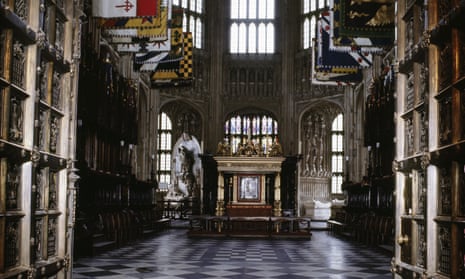At the back of an altar in Westminster Abbey is a looted tablet deemed so holy by Ethiopian Christians that only priests from the country’s Orthodox church are able to look at it.
But the abbey has been accused of gross cultural insensitivity for apparently failing to respond when leaders of the church asked to be able to pray beside the artefact. “I was very shocked and surprised,” said Samuel Berhanu, a deacon in the Ethiopian church in London, who contacted Westminster Abbey last year asking for permission for Ethiopian Orthodox church leaders “to organise a viewing and prayer session”.
“I just couldn’t believe that in the 21st century you could have this mentality whereby they have no regard to cultural, religious issues. They were not even open to discussion.”
Tabots, small tablets in stone or wood, were among hundreds of objects looted in 1868 from Maqdala, the mountain fortress of Emperor Tewodros II in northern Ethiopia, by an expeditionary force under the command of Lieutenant-General Sir Robert Napier (one of the Victorian “titans” hailed by Jacob Rees-Mogg in his new book). The treasures – which to the 35 million-strong community of Ethiopian Christians are deeply sacred – were shared between various institutions, including the British Museum. One tabot was donated to the abbey, by an army officer and in 1870 the architect George Gilbert Scott incorporated it into his designs for an altar in the Henry VII Lady Chapel.
In 2010 Westminster Abbey was accused of sacrilege over its refusal to return it to the Ethiopian Orthodox church. Now it is facing another controversy, stemming from an email exchange between Berhanu and Duncan Jeffery, the abbey’s head of communications, which began last August.
Berhanu, who has campaigned for the return of looted artefacts, wrote to the abbey: “As you know, the tabot is the foundation of the Ethiopian Orthodox church and is what sanctifies and consecrates a church building. The tabot is believed by Ethiopian Christians to be the dwelling place of God on Earth, the mercy seat described in the Bible and the representation of the Ark of the Covenant. Every church has at least one tabot which, when consecrated, is kept in the Qeddest Qeddusan (Holy of Holies) where only the clergy may enter.”
He asked whether a visiting Ethiopian archbishop could arrange a viewing of the chapel and its tabot.
Jeffery replied: “I must stress that the dean and chapter is acutely aware of the sensitive nature of the tabot … Because of the sensitive nature … steps were taken to ensure that the tabot, which is in a very sacred place, was properly covered and could not be seen by anyone. We have no plans to change these arrangements.”
Berhanu wrote: “Are you able to answer the rest of the questions I asked?”
Jeffery replied: “Thank you for your email. The abbey will not be elaborating any further.”
Berhanu wrote again: “Is it possible to organise a viewing and prayer session from leaders of the Ethiopian Orthodox church? Would Westminster Abbey be able to accommodate this visit?” He said he had not received a further response.
“As a Christian, how do you have this view? How are you not able to open the doors?” asked Berhanu. He described the abbey’s approach as “quite shameful” – all the more shocking as the church itself was not granting permission to pray. “To me, that’s an additional layer of disappointment.”
An abbey spokesman yesterday reiterated its statement to Berhanu about being “very conscious of the sensitivity of the tabot”, adding: “The dean and chapter has no plans to change these arrangements.”
